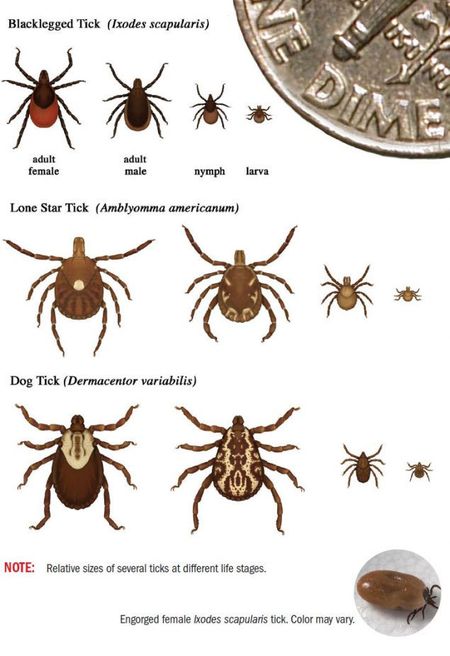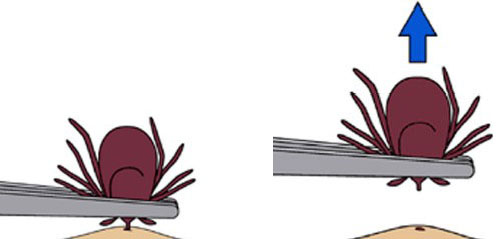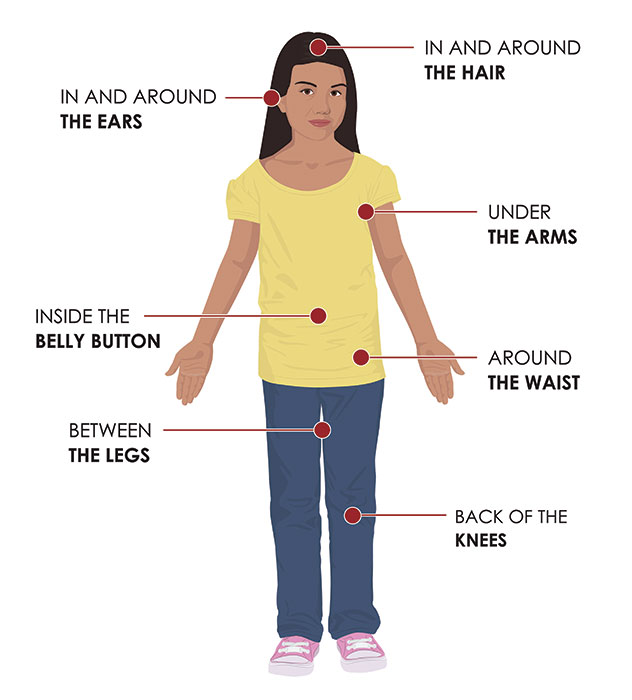Truth About Ticks. By Our Student Pharmacist, Catherine Mechler.
Ticks are small insects that typically live in long grass, trees, shrubs, and leaf piles. They feed off the blood of humans and animals and can sometimes transmit diseases. Ticks prefer warmer months and are most active in April-September, although you can find them anytime throughout the year.(1) It’s therefore important to know how to identify ticks and what to do if you find one!
There are a variety of tick species that are found throughout different regions of the world. You can find more information about the specific tick species that occupy different regions of the U.S. on the Centers for Disease Control and Prevention (CDC) website. In Ohio, we have three types of ticks that are most commonly found:(2)
- American Dog Tick (Dermacentor variabilis)
- Blacklegged Tick or Deer Tick (Ixodes scapularis)
- Lone Star Tick (Amblyomma americanum)
Even within the same species, ticks can range in size from the size of a pin head to the size of a pencil eraser. Their size fluctuates depending on if they’ve eaten recently – the larger the tick, the more blood it has taken in recently.(1) If you or your pet get bitten by a tick, you’ll likely know because you find them embedded in your skin.
What do you do if you get bitten by a tick?
DON’T PANIC! The best thing you can do is remove the tick. Follow these steps from the CDC:
- Use fine-tipped tweezers to grasp the tick as close to the skin’s surface as possible.
- Pull upward with steady pressure, being careful not to twist or jerk the tick. If the mouth parts break off, remove mouth parts with tweezers, and if still unable to remove mouth easily, leave it alone and let the skin heal.
- Clean the bite area with rubbing alcohol or soap and water.
- Dispose of a live tick by putting in rubbing alcohol, placing it in a sealed bag/container, wrapping it tightly in tape, or flushing it down the toilet.
There is a wide range of reactions someone could experience if bitten by a tick. Majority of the time, you won’t experience any symptoms or may have a minor allergic reaction that could include:(1)
- Pain or swelling
- Rash
- Burning feeling
- Blisters
If these symptoms become bothersome or if you experience difficulty breathing, it could be a sign of a severe allergic reaction and you should seek care immediately!
Tick bites may also cause diseases, such as:
- Lyme disease
- Rocky Mountain spotted fever
- Babesiosis
- Others!
Each of these diseases has their own unique set of symptoms to look out for.
How can you prevent being bitten by a tick?
If you’re going camping or spending a lot of time in the woods or tall grasses, you can use permethrin 0.5% to spray on your clothing and other camping gear.(3) Permethrin should ONLY be applied to clothes and gear. Never apply this to your skin.
Insect repellent is the best way to prevent any unwanted ticks. There are many different products you can use as tick repellent, including some that double as mosquito and tick protection. Products that contain at least 25% DEET are sufficient to repel ticks. Here’s a helpful tool from the Environmental Protection Agency (EPA) that’ll help you choose the right product for you!(4) Wearing a long sleeved shirt and pants and walking in the center of trails are other ways to prevent being bitten from ticks.
After coming inside, you should always check your clothing, gear, and body for any critters. It’s also recommended to shower within two hours after coming inside.(1,3) Ticks love warm, moist places, so be sure to double check:
- Under arms
- Behind ears
- Between legs
- Behind knees
- In hair
Ticks also love your furry friends. Many pets are on flea and tick medication already, which should prevent them from being bitten, but you will still want to check any pets that have been outside for ticks.(1,3)
To get more information or to answer any questions, feel free to check out this link for the CDC’s website on ticks!
References:
- https://www.healthline.com/health/tick-bites
- https://ohioline.osu.edu/factsheet/HYG-2073
- https://www.cdc.gov/ticks/index.html
https://www.epa.gov/insect-repellents/find-repellent-right-you





